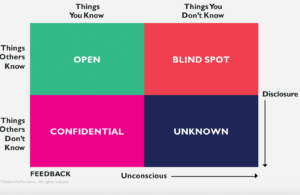As CEO of a leading commercial skills training and coaching company, I’m a big believer in practicing what we preach and using feedback to help us raise our game. As Bill Gates so wisely said, “we all need people that give us feedback. This is how we improve.” In today’s increasingly competitive workplace, standing still is no longer an option – in fact it’s the fastest way of going backwards. Organisations need to use feedback to support and encourage their employees to keep raising the bar.
Yet, I’m always amazed how many managers put feedback on the back-burner or save it for a yearly conversation at the annual performance review. Perhaps they find it easier to bury their head in the sand rather than have the difficult conversation or maybe they are too busy fire-fighting to find time to prioritise their team’s personal development. Whatever the barrier, it’s time to move feedback up the agenda and take practical steps to help your team get commercially fit, agile and resilient so they can go far and achieve the extraordinary.
How feedback can help your team maximize their performance
Feedback is described as the breakfast of champions for a reason. It gives your team food for thought by helping them hone their skills, reinforce good behaviours, raise awareness of unhelpful behaviours and help them stay motivated and engaged. In my experience, top performing teams differentiate themselves by proactively seeking regular feedback on their performance from their most important stakeholders. By applying a 360 degree approach to gathering feedback – internally from colleagues and managers and externally from suppliers and customers – you are more likely to identify your team’s areas for development and help them move them out of their comfort zone and into their stretch zone – their area of best performance.
A powerful tool to help you uncover these blind spots is the Johari Window, a personal development technique developed by a team of psychologists in the 1950s.

Let’s start by looking at the window from the perspective of the individuals on your team; The OPEN box shows what is known to others as well as themselves. This could be their level of technical expertise or strengths they are proud of. The BLIND SPOT is what is known to others but not known to themselves. Perhaps they don’t understand the impact they are having on other people in their team or are over-confident but haven’t yet earned their stripes. The UNKNOWN box is what is not known to others or to themselves. This could be their full potential – perhaps they haven’t yet been fully tested or given the opportunity to be the best that they can be. Finally, the HIDDEN box is what is not known to others but is known to themselves. This can be where self-doubt and imposter syndrome lurk – self-limiting beliefs about their ability that they are reluctant to share with others.
By applying the Johari Window in the context of the feedback you have gathered you will be able to take practical steps to help your team reduce their blind spots, banish self-limiting beliefs and develop new skills that enable them to reach their full potential. For example, imagine a supplier has fed back that someone on your team adopts a master–servant relationship with them during meetings. By helping this person gain awareness of their communication style, they can take active steps to change their behaviour and communicate in a more balanced manner. Over time, this will help them re-build trust with the supplier, resulting in both parties benefiting from an improved relationship that fosters greater collaboration and delivers improved results.
Finally, as the manager, remember to ask for feedback from your team in return to double-check you are providing them with the right support. This will also send them a strong signal that you truly value the power of feedback. Try to step outside of yourself and listen objectively to what they have to say. It can help if you draw on your empathy and put yourself in their shoes. Then take some time to digest the feedback before responding. Remind yourself that it’s never too late to teach an old dog new tricks. After all, it’s only by taking on board feedback that we can grow and develop and become the very best that we can be.



